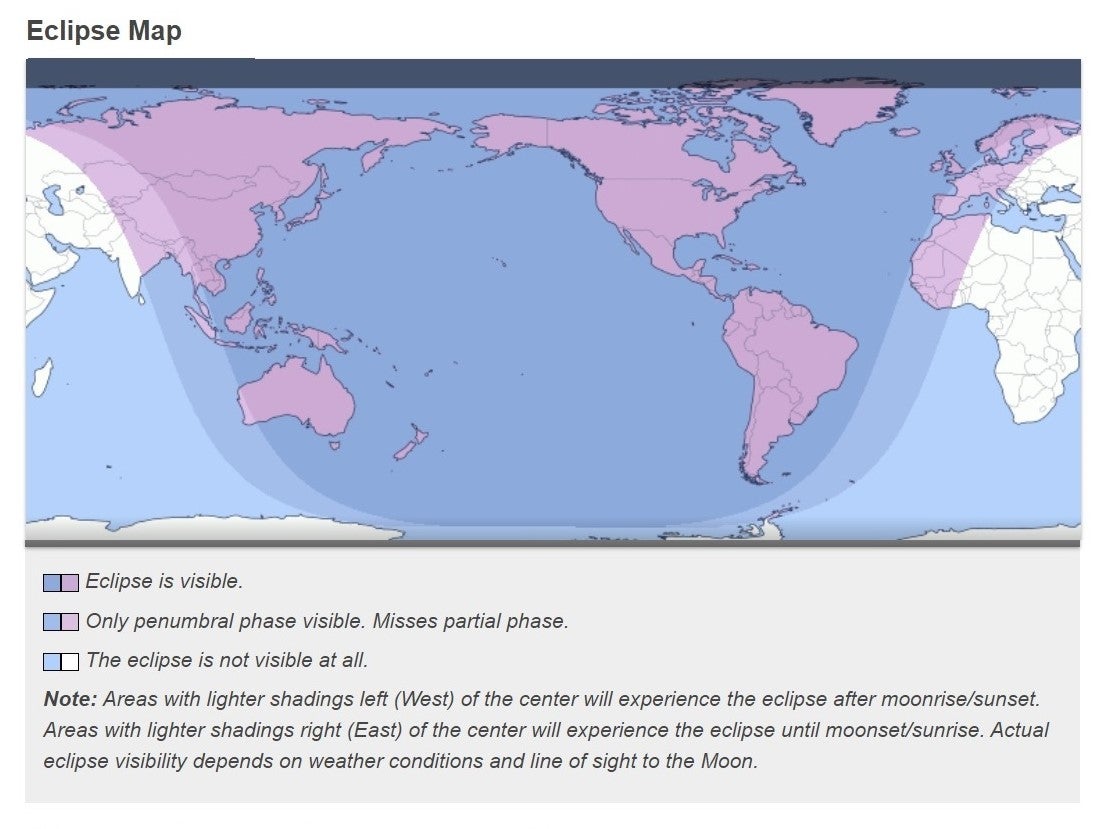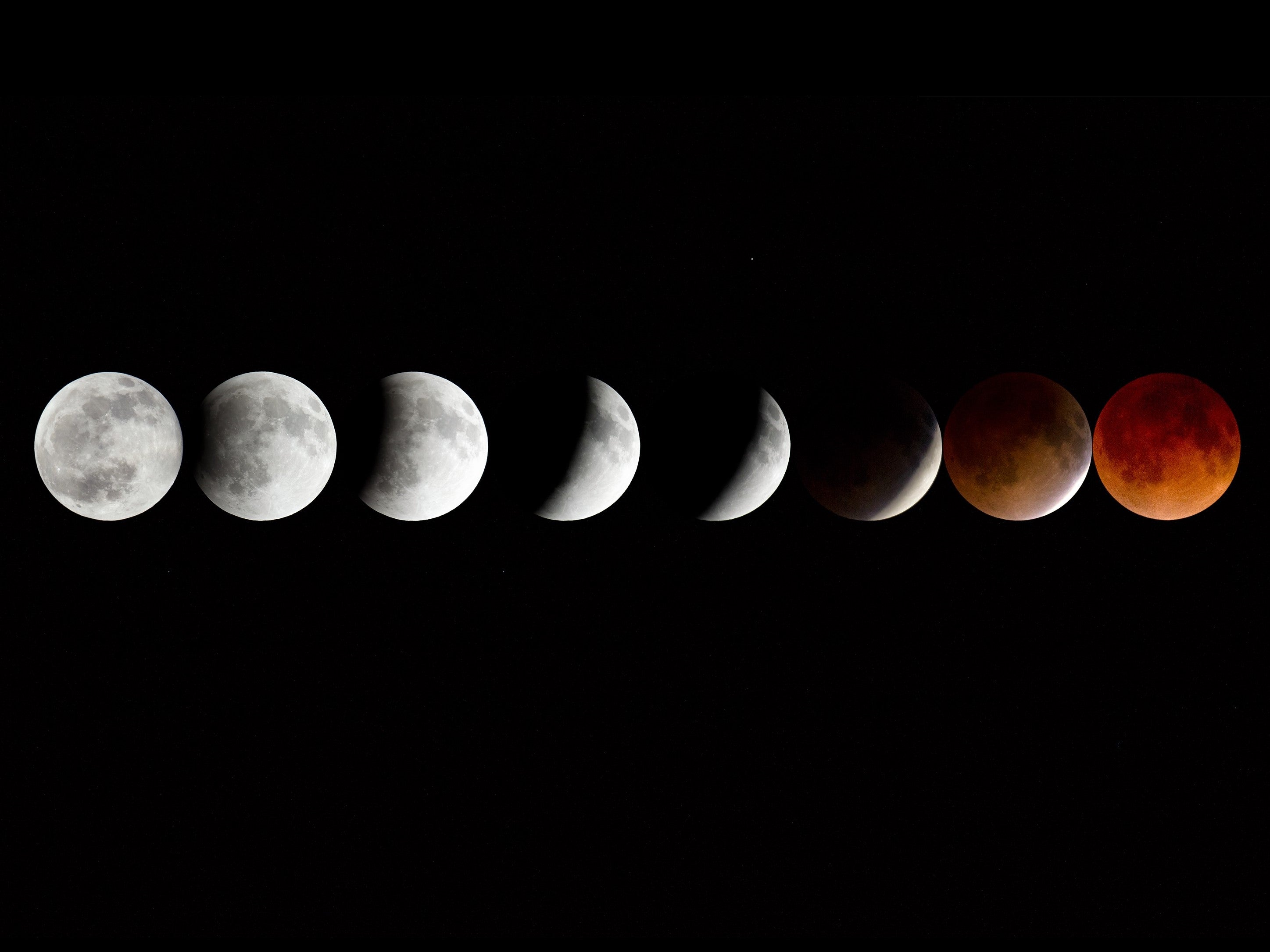The Independent's journalism is supported by our readers. When you purchase through links on our site, we may earn commission.
What makes a ‘blood moon’ red and is it dangerous to look at it?
The cosmic phenomenon that will paint the lunar eclipse red on Thursday and Friday is the same force that lights up our sunsets here on Earth and makes our daytime sky blue
Behold! The blood moon cometh. For almost three and a half hours on 18 and 19 November, sky-watchers in North America, South America, East Asia and Australasia will see the moon turn red.
Feared and revered by ancient peoples across the world, this strange sight is the result of a partial lunar eclipse, in which the full moon passes out of the sun’s rays and into the shadow cast by the Earth.
It will be the longest such event since 1440, and there won’t be another as long until 2669. In New Zealand, it is the first one visible since 1212.
So why does it happen, and is it safe to look at?
What is a blood moon?
A blood moon is the popular name for what happens when a full moon goes into total or partial eclipse, meaning that the Earth blocks out its view of the sun.
Our moon’s phases are based on its position relative to the sun in our sky. A new moon is when the moon is between Earth and the sun, so the sun’s rays hit the back side of it and we just see a dark silhouette.
A full moon is when it orbits to the opposite side of the Earth, so the sun’s light comes past us and hits the moon full on its face.
Usually the two big rocks aren’t so aligned that the Earth blocks this from happening. Yet the Earth is always casting a shadow, and sometimes the moon passes directly through it. While the moon is in the Earth’s shadow, its face looks red to us.

Technically this week’s event is only a partial lunar eclipse, but it’s not far off a full one: 97 per cent of the moon’s visible surface will be in full shadow, with just a tiny sliver of illuminated rock. Over three and a half hours, the red shadow will slowly move across the moon and then recede again.
The reason this eclipse lasts so long is because it coincides with the point in the moon’s orbit around Earth where it is farthest away from us, sometimes known as a "micromoon". As a consequence it will have to move through a wider part of the Earth’s shadow.
Okay, but why is it red?
The answer has to do with how light waves move through different mediums, such as air and water, and how our eyes perceive the resulting light.
Light is a type of electromagnetic radiation, just like the microwaves we use to cook food or the X-rays we use to scan our bodies. Visible light is just what we call the portion of the electromagnetic "spectrum", similar to a musical scale, that is visible to the human eye.
Colours are simply how our eyes perceive different kinds of light within that visible portion, meaning that our spectrum of colours is just one part of a much bigger range. The sun pumps out radiation across this spectrum, from gamma rays through visible light to microwaves and radio waves.
From our perspective, the colour of a wave depends on its wavelength, meaning the distance between each crest and dip in its undulating form. We can also measure this in terms of how often the wave pattern repeats itself – its frequency.

Red and orange have the longest wavelength and the slowest frequency, repeating between 430 and 510 trillion times per second. Blue and violet have the shortest wavelength and the fastest frequency, repeating between 670 and 750 trillion times per second.
This is why the types of light just outside our visible range are called infrared and ultraviolet; the former means "below red", and repeats below 300 trillion times per second, while the latter means "above violet", and repeats more than 1,000 trillion times per second.
How does that connect to our moon? Well, when the moon moves into the Earth’s shadow, the sun’s light has to squeeze around the edges of our planet to reach it, travelling through a long, dense layer of our atmosphere.
During the journey, some of that light hits gas particles and "scatters" away into the atmosphere. Short wavelengths are much more susceptible to this than long wavelengths, so it’s the blue tones that scatter away and the red that gets through to shine on the moon.
Incidentally, this scattering effect is the same reason sunsets and sunrises are red: when the sun peeps around the edge of the Earth, its rays hit us "sideways" through the atmosphere and the blue rays get scattered. From the moon’s perspective, a lunar eclipse is a sunset too – the sun setting behind the Earth.
This is also why the sky looks blue to us, as scattered blue and green rays bounce around in our atmosphere. When we look towards the sun itself, not so many blues have been scattered yet, so the sky looks whiter and the sun looks yellowish.

Is the blood moon dangerous to look at?
Not at all, unless you’re a werewolf. Unlike a solar eclipse, which is too bright to look at directly and must be viewed with special eye protection or via its reflection or shadow, the moon is merely reflecting the sun’s rays and is safe to gaze upon.
But it looks kind of spooky, right?
Totally, and our ancestors thought so too. Ancient civilisations frequently attributed malice to the blood moon, undertaking rituals to prevent its evil influence.
The Inca supposedly believed that a celestial jaguar was attacking and trying to eat the moon, so they would shake spears and make noise at it to drive it away. Or so at least claimed the Spanish colonists – not exactly an unjaundiced source.
In ancient Mesopotamia, the blood moon was thought to represent a cosmic attack on the king. Like a modern-day dictator using lookalikes to dodge assassination, they would put a surrogate king in place ahead of time while the real king pretended to be an ordinary citizen.
Others have a kinder view. One myth among the Batammaliba people of Togo and Benin says that lunar eclipses are a time of conflict between the sun and the moon, and that humans must encourage the pair to resolve their differences by settling our own disputes on Earth.
Another story told by the Luiseño tribe of Native Americans, from what is now California, is that the moon is sick and humans must sing chants and prayers to help it get well.
Join our commenting forum
Join thought-provoking conversations, follow other Independent readers and see their replies
Comments
Bookmark popover
Removed from bookmarks